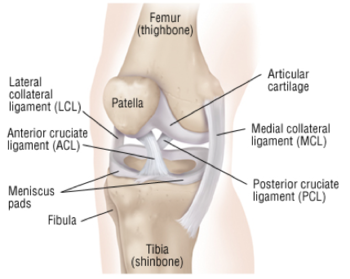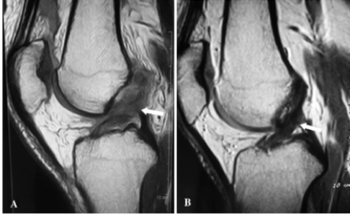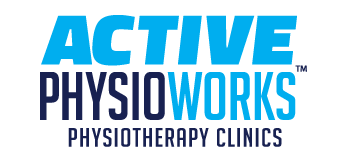Whatever It Takes Documentary
Jan 29, 2020


The 2 main takebacks from the documentary are: 1) rehab isn’t easy but can have several benefits and 2) knee surgery isn’t always necessary to get back to sport.
Connor McDavid, who is widely considered to be the best hockey player in the world, expresses his stress and frustrations throughout the documentary explaining the lengthy and tedious process of exercising up to 10 hours a day, seven days a week at certain points in his journey. These emotions are commonly experienced by athletes and non-athletes alike and can be the most challenging part of rehab. Physically, our bodies are very good at adapting to new stressors. With time and effort, our muscles, bones, ligaments, etc. can become stronger and withstand the demands of daily life and sport. What has recently become much more apparent and poses an even greater challenge is overcoming psychological barriers. A recent systematic review and meta-analysis showed only 53% of people who undergo an anterior cruciate ligament (ACL) reconstructive surgery return to their previous level of sport (1). In this study, the 2 greatest factors limiting the return to competitive sport was older age and fear of re-injury. Good knee function and quadricep strength are also predictors of returning to sport (2, 3), but many people overlook the psychological toughness required to endure a long rehab journey.
This documentary also highlights that it is possible to manage a knee ligament injury without surgery. There is emerging evidence that both ACL and PCL injuries can be managed without surgery and allow for people to return to their pre-injury level of sport (4, 5). This is due to many factors, one of the major reasons being that there are cases where a torn ligament has the potential to spontaneously heal, just like in Connors case. Multiple magnetic resonance imaging (MRI) studies have demonstrated that partially and fully torn ACL’s can reattach with time and conservative (non-surgical) care (5, 6) (Figure 2).

This is in no way undermining the importance of surgery! Conservative management can be very effective, but surgery can often be indicated when considering several factors like age, extent of the injury, social support networks, resources, goals and so on. For example, Connor McDavid had a very serious injury, most of whom would’ve elected for surgery if they experienced the same one. He also had the benefit of virtually unlimited resources, access to state-of-the-art recovery technology and a superhero-like rehab team to help him get to where he is now. The pathway chosen should be a decision made between the injured person and their healthcare practitioner when considering their goals and what it best for them.
Regardless of which pathway you choose, some form of rehab is always beneficial to a person’s function. Whether or not surgery is warranted, a well-designed rehab program should always be implemented prior to returning to sport to improve your physical function and prevent re-injury. At least 5-weeks of rehab after and ACL injury but before surgery (aka “prehab”) has shown to improve knee function 2-years later compared to those who didn’t do any pre-hab (7, 8). And when comparing people who have injured their ACL’s, a great rehab program resulted in similar knee function regardless of whether or not surgery was done (9).
In summary, 1) rehab can be very challenging and requires you not only to work hard at your exercise program, but to be considerate of you mental well-being throughout the process. 2) Surgery isn’t always necessary, do what’s best for you and your goals. 3) Having a strong social support system and a healthcare practitioner (like a physio ????), that has your best interest in mind it a great place to start! To book in for an appointment, call 780-458-8505.
References
1) Ross, C. A., Clifford, A., & Louw, Q. A. (2017). Factors informing fear of reinjury after anterior cruciate ligament reconstruction. Physiotherapy theory and practice, 33(2), 103-114.
2) Buckthorpe, M., La Rosa, G., & Della Villa, F. (2019). Restoring knee extensor strength after anterior cruciate ligament reconstruction: a clinical commentary. International journal of sports physical therapy, 14(1), 159.
3) Herrington, L., Ghulam, H., & Comfort, P. (2018). Quadriceps Strength and Functional Performance After Anterior Cruciate Ligament Reconstruction in Professional Soccer players at Time of Return to Sport. Journal of strength and conditioning research.
4) Agolley, D., Gabr, A., Benjamin-Laing, H., & Haddad, F. S. (2017). Successful return to sports in athletes following non-operative management of acute isolated posterior cruciate ligament injuries: medium-term follow-up. The bone & joint journal, 99(6), 774-778
5) Madelaine, A., Fournier, G., Sappey-Marinier, E., Madelaine, T., Seil, R., Lefevre, N., ... & Society, F. A. (2018). Conservative management of anterior cruciate ligament injury in paediatric population: about 53 patients. Orthopaedics & Traumatology: Surgery & Research, 104(8), S169-S173.Ihara, H., & Kawano, T. (2017). Influence of age on healing capacity of acute tears of the anterior cruciate ligament based on magnetic resonance imaging assessment. Journal of computer assisted tomography, 41(2), 206.
6) Costa-Paz, M., Ayerza, M. A., Tanoira, I., Astoul, J., & Muscolo, D. L. (2012). Spontaneous healing in complete ACL ruptures: a clinical and MRI study. Clinical Orthopaedics and Related Research®, 470(4), 979-985.
7) Eitzen, I., Moksnes, H., Snyder-Mackler, L., & Risberg, M. A. (2010). A progressive 5-week exercise therapy program leads to significant improvement in knee function early after anterior cruciate ligament injury. journal of orthopaedic & sports physical therapy, 40(11), 705-721.
8) Failla, M. J., Logerstedt, D. S., Grindem, H., Axe, M. J., Risberg, M. A., Engebretsen, L., ... & Snyder-Mackler, L. (2016). Does extended preoperative rehabilitation influence outcomes 2 years after ACL reconstruction? A comparative effectiveness study between the MOON and Delaware-Oslo ACL cohorts. The American journal of sports medicine, 44(10), 2608-2614.
9) Wellsandt, E., Failla, M. J., Axe, M. J., & Snyder-Mackler, L. (2018). Does anterior cruciate ligament reconstruction improve functional and radiographic outcomes over nonoperative management 5 Years after injury?. The American journal of sports medicine, 46(9), 2103-2112.
Please add your bio info through your member profile page, or through your dashboard.

